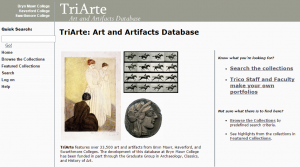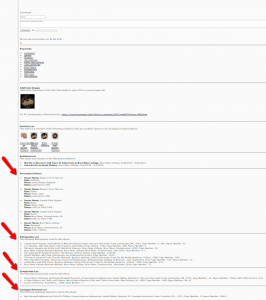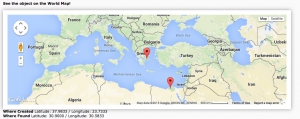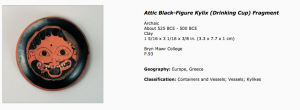There have been a few upgrades to TriArte this summer that provide more information about individual objects and enable new ways for users to interact with the collections.
1. Expanded Bibliographic Information
First, more information has been made available that expands upon the existing general information about the object itself in four new sections added to an item’s page. The history of ownership for the object leading up to its arrival at Bryn Mawr College is under Provenance History. Sources that have published about the object are included in the Bibliography List and the Catalogue Raisonné notes the authoritative publication. A Comparanda List provides references to objects that are considered similar to our examples. These new sections present some of the ongoing research to the general public that students, faculty, scholars, and staff have completed over the years.
2. Additional Map Features
Second, TriArte now maps data on both the creation and find spots for objects. On a map within the record, visitors can trace the journeys of exported vases or coins in circulation. For example, on the map above the Creation Location (Athens) and its eventual Findspot (Egypt) for the Attic Black-Figure Kylix Fragment with a Gorgoneion (P.93) is indicated.
**It is exciting to note that these two sections are continuing to expand on a daily basis with additions and corrections.**
3. New Feature: Portfolios
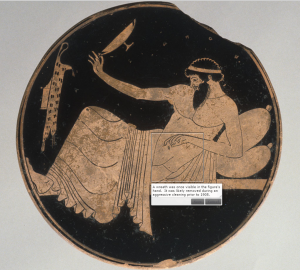
Tagged: A wreath was once visible in the figure’s hand. It was likely removed during an aggressive cleaning prior to 1905.
Third, Students and Professors can now create their own “Portfolios” on TriArte. Similar to the existing portfolios under the Featured Collections tab, one can save a collection of objects that are of interest for a class or for a project. A quick email to collections (artandartifacts@brynmawr.edu) will provide you with a username with which you can login to your own version of TriArte and start creating portfolios. Students can collect a group of objects in a portfolio to examine for a paper on Byzantine coins or Daguerreotypes. Professors can plan out visits for their classes to collections or store objects of interest together for future research. Furthermore, portfolio users can “tag” part of an object with notes, such as on P.95 here.
So check out our new features on TriArte!

